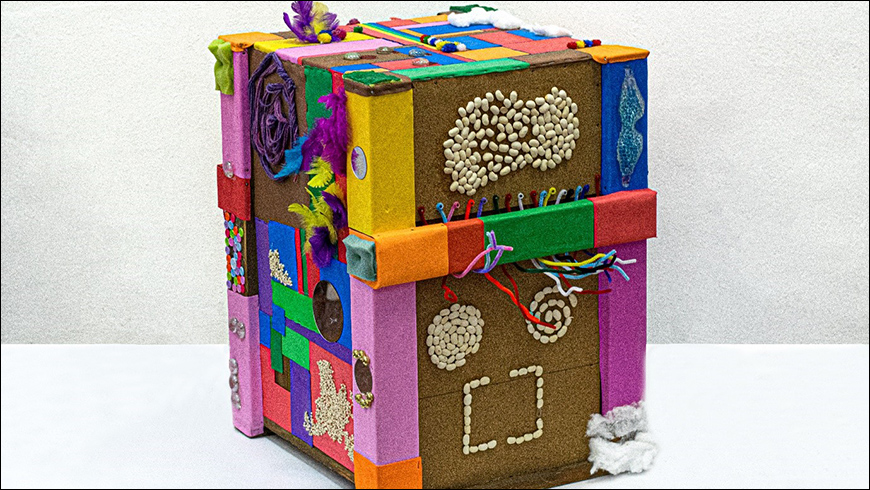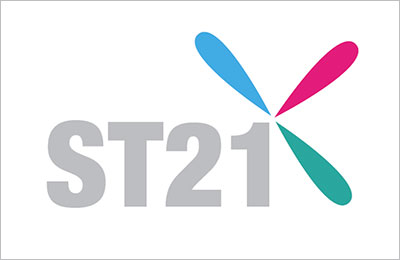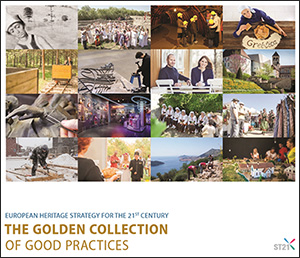Location of the initiative:

Initiator
Foundation
Relation to Strategy 21 Recommendations:
S2 - make heritage more accessible
Time span of the initiative:
Start date: 01. 10. 2018 / End date: 22. 04. 2019
Motivation / Methodology
The reason why we at National Gallery of Bosnia and Herzegovina, have started thinking about social responsibility of the Museum of Art, lies in 7 years long systematically educational practice with typical children and youth. During this period we have developed three types of programs for different ages of children: „Our story“ family museum educational program for pre-schoolers and their parents, based on the story found by the participants in the artwork; „Alternative classroom“ museum educational program for primary school aged and high school youth, based on Strategies of Visual Thinking and „School program“ exhibition museum educational program for children with lectures. We decided to experiment with different methodologies and approaches in museum education, in order to satisfy specific social, emotional, cognitive and communication needs of children with developmental disabilities. We were aware of the fact that most of the schools in Bosnia and Herzegovina are not implementing inclusion in right manner, and that the NGOs do not have enough professional and financial resources to work with the social and educational potential of these children. The schools for special education still represent one kind of discrimination and separation from the rest of the Society. Within our long experience working with the art collection as the educational resource for developing critical thinking, verbal and visual literacy, active learning and learning by discovering, we have realized that in the collection lies huge potential for better understanding of the world that surround us, our emotions and emotions of other people. Because of this acknowledgement and special pedagogy fact that says: that children with developmental disabilities (especially children within Autistic spectrum) can have better cognitive understanding of concepts via visuals, we have decided to implement outreach museum educational program for children within Autistic spectrum symbolically named "Blue Artism". Following the principles of an outreach museum program, we have collaborated with the local community: NGO "Give us a chance" from Sarajevo that takes care of this socially vulnerable group, Primary School for special education "Mjedenica" in Sarajevo and Pedagogy Department in Faculty of Philosophy in University of Sarajevo.
We have used the criteria of age: children from 10-14 years old, because we assumed that their will have better developed communication skills, and inclination to visual arts and creativity. The school and NGO have selected 6 participants: 3 from the regular inclusive school system and 3 from special school system, because we wanted to make comparison between these two groups in terms of perceiving the visual arts. Our main goal was to make children and people with developmental disabilities regular visitors of museum of art, and specific goals: to identify the cognitive barriers in understanding of visual arts, to work on the development of social skills of the participants in the specific museum context, and to develop communication and cognitive skills. Firstly, we have met our participants during the period of two months, giving them the opportunity to get the know the educator and vice versa - to give the educator the opportunity to meet individual needs of every individual participant. After that, we have made "Social story" a PDF file with photographs of the interior of the museum and all the stuff that they will meet during their museum visit, with elaborated activities in first person manner. This method needed to ensure safe transfer of the participants in new surroundings. The program has lasted for 6 months, and we have gathered in small groups every Saturday in different exhibition context, on different theme and with different artistic materials. Most of the exhibitions were from our collection: permanent exhibition "Intimacies of space" (the beginnings of modern art in BiH), wooden and metal portrait sculpture, original prints of IVX Olympic games in Sarajevo, "Collection of Mirko Komosar" etc. Some of the exhibitions were guesting at the museum: Jagoda Bujić's aquarelle's and sculptures, Josip Mijić's wooden sculptures etc.
The methodology and the structure of the activities were adjusted according to the specific condition of the person from Autistic spectrum: the structure had to be firm in order to ensure sense of the security and predictability for all of the participants. So, the frame of the structure remained the same, but the topics, exhibitions and art materials were changing from week to week. Transitions from one activity to another had to be smooth and announced to the participants explicitly. After the participants arrived in to the Museum, we would start doing breathing exercises in motion: the educator would start circulating the exhibition space, inviting the participants to follow her and raise her hands above the head when inhaling loudly and descending them down when exhaling. This 5-minute activity supposed to decrease any existing anxiety in participants and prepare them in cognitive activities that are about to start, also decreasing their need to move excessive during the cognitive activities. Also, by starting and ending every workshop with these exercises, we have created a ritual frame for museum activities, that ensured sense of predictability and security to the participants. First cognitive activity included guided tour for the participants with selected artworks that referred to the selected topic (Human body, landscape, still Nature, concept of Freedom. Geometrical shapes...etc.). Off course, the ways of communicating were adjusted to the needs of every individual participant. The discussion about artworks was led on the principles of Strategies of Visual thinking by asking the questions: What do you see on the picture? What is drawn on the picture? Sometimes, according to the topic, these tours were followed by tactile exercises, e.g. on fruits and vegetables when we processed genre of still nature. Special tactile box as the part of didactic resources was made by the educator: on old wooden box for storing the museum artefacts, we applied different kinds of materials: wool, buttons, cotton, sponge, feathers, mirrors... Participants needed to touch the different surfaces and verbalize the sensation under the fingers. Different tactile exercises were created in order to stimulate other senses than sight, and to improve sensory-motorial skills.
The discussions and tours sometimes were enriched with "go find it" cards, on which we have applied distinctive motives from some of the artworks from the exhibition, in order to increase participants’ focus and concentration. The active participants during the discussions were rewarded by stickers. This motivational gesture they could exchange for refreshments during the breaks every 15 minutes. After the discussions, the participants would begin with creative work: charcoal drawings of human body, dry pastel drawings of still nature by the real setting, landscape in oil on canvas, combined techniques with sand glue and colours, collage, Chinese paper, portrait clay modelling, painting on wooden cubic shapes...etc.
After the creative activities were over, the participants proceeded to self-evaluation of the emotional state after the workshop, and educator would finish the workshop with breathing exercises in motion. At the end of the program, the educator (by her profession an Art historian) collected all of the artworks created in duration of 6 months, selected and organised an exhibition of "Blue artism". The participants artworks were followed by photographs and videos from the program, in order to show the museum-pedagogical work that was done. The Blue artism was imagined as an annual alternative museum-educational program for children with developmental disabilities, and we are hoping to ensure financial support in future in order to continue. As digital instalment of the methodology, "ARTsee" android tablet application was born at the end of 2019. Imagined as a digital tool for alternative interpretations of museum artworks via visuals, auditives and textuals for children, youth and persons with different cognitive abilities.
Obstacles / Barriers
It was very important to develop strong relation of trust between the persons involved in to the project and the parents/caregivers of the participants, in order to have information needed about the specific needs and behaviours of the children. In this manner we have disseminated the group of questionnaires about specific social, communication and visual processing skills to the parents/caregivers. At the end of every workshop we also disseminated them questionnaires about children's behaviour at home. This way we could track if the interests of the participants about Museum increased during the time spent at home. One of the obstacles that occurred during the program implementation is related to the last activity in the workshops: emotional self-evaluation of the participant. For this activity we have designed vertical evaluation scale, where we used words for emotional states like: sad, satisfied and happy and matched them with colours: blue for sad, green for satisfied and yellow for happy. On the opposite side of the evaluation scale we have applied sticky tape anticipated for emoticons that needed to represent every participant, We have asked the participants to stick one of the emoticons, on the sticky tape of the scale: from sad to happy, according to their emotional state after the activities were done. During this activity we have realized the impossibility of persons within Autistic spectrum to understand their own emotions and emotions of other people. We decided to remove the scale and offer them only sad and happy emoticon. By narrowing the choice with only two most distinctive emotions, we made this activity easier for the participants.
Change / Impact
Every of the workshop was observed by two student assistants (student of Pedagogy and Psychology) in order to note the progress of every participant in the categories of cognitive, communication and socialization skills, emotional satisfaction and frequency of occurred stereotypies. After the program finished, the results of the observation list were summarized and shown that: most of the participants made progress in social interaction and communication between other participants and project implementors, developed positive attitude towards museum institution and shown great level of self-confidence during the project implementation and especially at the exhibition opening. The main result of the program was the exhibition "Blue artism" that occurred at National gallery of Bosnia and Herzegovina from 22. of march - 14. of April 2019. and attracted attention of the museum professionals, general publicity, artists and academic citizens. During the exhibition installation many of the typical school aged children participated at the workshops, where they could relate with the specific perspective of the world though artworks of their peers with Autism. The exhibition supposed travel to Mostar and be exhibited on 02. of April 2020. for the International Autism awareness day and be opened until the end of the may (in the middle of May ICOM celebrates international Museum day on this year’s topic of inclusion). But the recent situation with Corona pandemic, prolonged these activities. Besides the inclusion of the participants into the regular museum-educational programs of the Museum (Alternative classroom and School program) after the Blue artism finished, we also employed a teenage girl with Asperger's syndrome as Museum Educators assistant on voluntary basis.
She is studying at High School of applied arts in Sarajevo, what makes her competitive to be included in different kind of creative and artistic activities with the typical children of all ages. Besides the technical help that she is providing to the Museum educator during the workshops, what makes her feel more valuable in the society she is living, also the interaction and communication with the younger children and her peers, builds her self-confidence, socialization and communication skills. The main goal of the project has been successfully achieved: children and youth with developmental disabilities are part of our visitor’s guided exhibition tours and creative workshops. We are trying to host as much as more activities for children that are part of the inclusive regular school system and also classes of children from special schools. These activities now run in regular frame of museum-educational program of the National Gallery of Bosnia and Herzegovina for people with different cognitive abilities: Blue artism. Still, we don't have self-initialized museum visits by children, youth and grownups from this socially sensitive group, but we are trying to overcome that obstacle by starting an online initiative that will offer enough information for the parents and caregivers of these socially sensitive group, like online social story on the Gallery, digitized museum objects and alternative interpretations.
Lessons learned
From our pilot program we have learned that collaboration with the local community is the most important part when implementing activities for some social group. In this manner, it is very important to follow all the propositions of an outreach program: to find collaborative sides from professional fields related to the topic or targeted group that you want to include. The most important quality of the contemporary museum is to be sensitive on the constantly changing needs of the society. Museum needs to listen, to pay attention and to observe the changing society and then to give immediate and correct response that would be valuable to a specific social group pr the society in whole.
If we go back to the project, there are a lot of lessons learned, for example: we have identified that perception of visual artworks is very symbolic in children from Autistic spectrum. They process cognitive concepts better with pictograms, narrative painting followed by good simplified story, than only with words. So, we have decided to create a digital version of the Blue artism methodology: android application for tablets ARTsee.
ARTsee was developed from code with financial help of Goethe Institute in Bosnia and Herzegovina and it represents a digital tool for alternative interpretations of Museum objects for children and youth with developmental disabilities.
The app scan's the QR code, placed next to the selected artwork in the exhibition, and offers the user 3 types of alternative interpretation: visual, audio and textual interpretation. These offers are presented with symbols of eye, ear and „ABC“for the text.
The visual part of the interpretation is based on the formal, emotional or narrative background of the artwork and it is presented in the form of animation. Audio interpretation associates with the visual content of the original artwork and textual interpretation describes the painting in three different cognitive levels, because we assumed that we will reach wider circle of our targeted group with more layers of interpretations.
ARTsee needs to be tested in the museum context when the pandemic is finished. We have created three control groups of respondents that will use the app in permanent exhibition „Intimacies of space“. By observing their behaviours, we will track cognitive, communication and socialization skills progress.
Online resources
- https://www.instagram.com/umjetnickagalerijabih/
- https://www.instagram.com/colourfulldidi/
- https://www.facebook.com/umjetnickagalerijabih/
- https://www.facebook.com/ARTseeUGBIH/
Contact information
Contact person: Aida Šarac
Organisation: National Gallery of Bosnia and Herzegovina
Email: [email protected]
Phone: +38762824104
Website: www.ugbih.ba
Source of financing
Public, 2 500, 00 euros





